North Sami, a language spoken in the Arctic, has more than 300 words for snow and a special word for “frightened reindeer”. Can it survive in a warmer world?
Pentti Pieski, a translator and tourism entrepreneur from Utsjoki in the far north of Finland, loves going out in his boat to fish for wild Atlantic salmon. For the past three years, however, he hasn’t been able to go, as Finland and Norway have banned salmon fishing on River Teno to protect depleted stocks. For Pieski, there is a double loss. He misses the fishing trips, and he also misses the conversations he has on those trips, held in an ancient language uniquely suited to salmon fishing in the Arctic: North Sami.
The Sami languages are intricately tied to the way of life of the Sami indigenous people in Norway, Sweden, Finland and Russia. The Sami have coped with the extreme Arctic environment for thousands of years and today number around 50,000 to 100,000. Their languages range from the relatively widely spoken North Sami, estimated to have more than 20,000 speakers, to the exceedingly rare Ume Sami, spoken by only 25 people, and the near-extinct Ter Sami in Russia. But those overall figures don’t capture just how important these highly specialised languages are to traditional Sami activities such as fishing and reindeer herding, as well as observing and describing Arctic weather patterns. In the Sami languages, for example, there are more than 300 words for snow, eight words for different seasons, and six different words to describe reindeer wandering by themselves. There are also several words for “frightened reindeer”, depending on their sex and age.
As climate change is threatening the Sami people’s traditional way of life, Pieski and others fear that their language is also changing.
“Traditional salmon fishing is a lot more than catching the fish. It starts with the planning: who you go with, do you need to buy or make new nets, or repair the old ones,” says Pieski. “Next you’re on the river, waiting for your turn. Then there’s the stories around the fire [told in North Sami]. But these conversations are not happening now and some of the language is fading away.”
Aged 52, Pieski is one of the youngest in a group of fishermen using traditional driftnets on one of Europe’s biggest salmon rivers, Teno, that flows through pristine Arctic landscapes along the border between Finland and Norway. For him, the language is part of the community’s ancient bond with the land and water.
Pieski says one endangered Sami word is jiekŋaguolli. It refers to salmon in the spring, immediately after the ice on the river breaks up. According to him, there’s no need to use that word anymore. Due to the declining stocks, even before the ban, the official fishing season was shortened and started on June 1. By then, the river was clear of ice – and fishermen did not have any chance to see any jiekŋaguolli, or “early springtime salmon”.
“Jiekŋaguolli is a word that is going to disappear,” predicts Pieski.
He and Klemetti Näkkäläjärvi, president of Sami Climate Council and researcher at the University of Helsinki and the University of Oulu, both see these vulnerable words as symptoms of a much wider problem: climate change.
“Climate change is a new word in North Sami: it’s dálkkádatrievdan. It has become commonly used nowadays,” says Näkkäläjärvi. “Sami people speak about climate change quite a lot, especially reindeer herders.”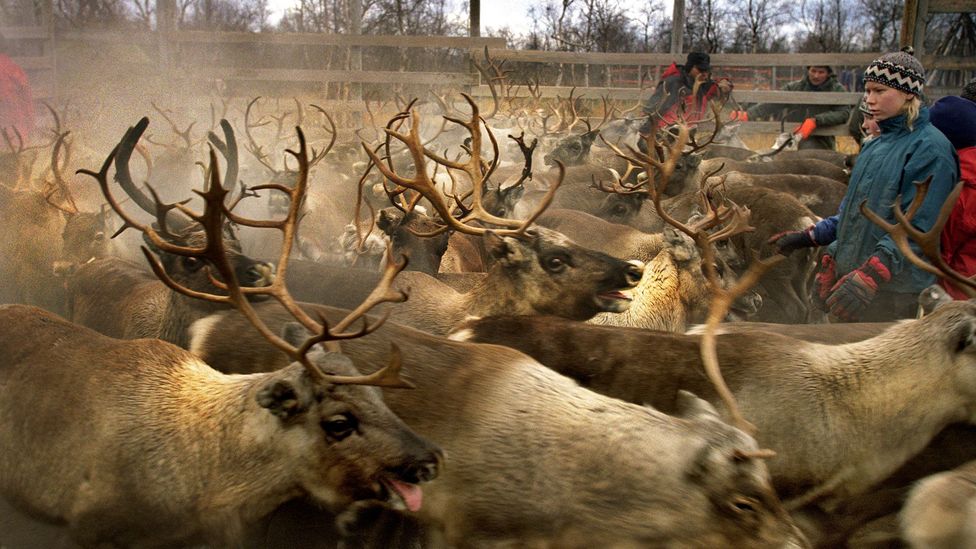
The Sami language is intertwined with a traditional way of life that has sustained Sami communities in the Arctic for thousands of years (Credit: Getty Images)
Climate change has had a profound impact on Sápmi, as the Sami refer to their border-crossing traditional Arctic homeland, a region that’s warming four times faster than the rest of the Earth. Rising temperatures have changed Arctic ecosystems that Sami livelihoods such as reindeer herding and fishing depend on.
“There’s a problem in the ocean that’s caused a massive decrease in the number of salmon returning from the sea to the Teno river,” says Jaakko Erkinaro, research professor of Natural Resources Institute Finland. “The entire north-east Atlantic and Barents Sea ecosystem is changing. The sea water temperature is increasing. The ocean currents are changing. The acidification of the ocean is increasing. The distribution of food items used by the salmon has become different. It’s difficult to pinpoint what exactly has caused the decline in salmon stocks but climate change is definitely the key driver.”
Certainly, some of the declines in salmon numbers are in line with what scientists have predicted will happen with climate change.
Pieski says these days, jiekŋaguolli, the springtime-salmon word, is only used when talking about the past, when the fish were still abundant.
The vanishing salmon word comes at the end of a complex chain of events: lower stocks, missed fishing trips, lost conversations. But there are also words affected in a much more direct way. Among them are a range of very nuanced, specific words for snow, and for certain types of cold weather. One study of traditional Sami snow words found that they reveal important information relevant to reindeer herding and reindeer ecology. For example, a word for a certain kind of snow cover may also reveal whether this type of snow makes it easier for reindeer to find food, whether it allows the herders to easily spot tracks in it, whether it is easy to move across, and other information related to herding and survival, according to the study.
However, some of those words around snow and weather conditions are no longer needed, as the snow and weather they refer to are becoming rarer or disappearing altogether due to climate change, Näkkäläjärvi says.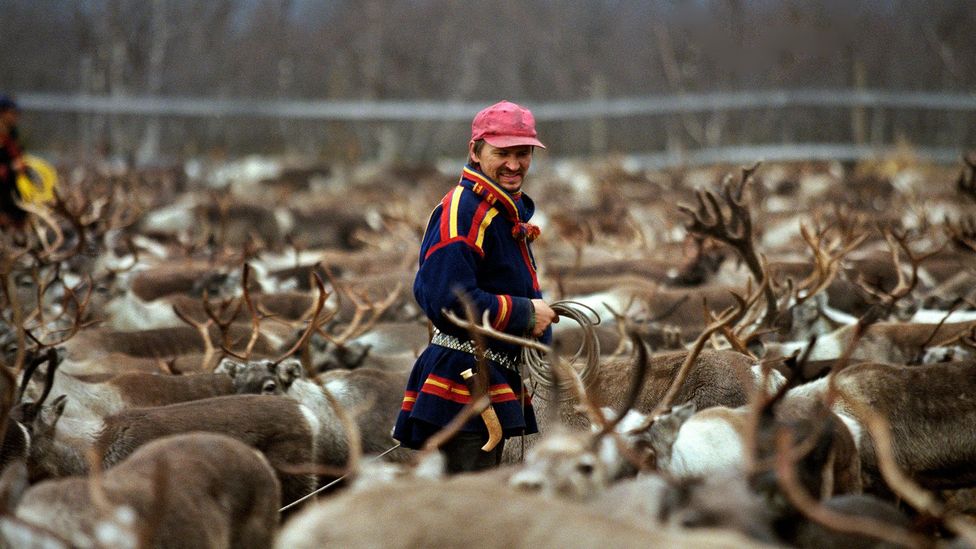
Sami reindeer herders use a highly specialised vocabulary related to reindeer, snow and weather conditions (Credit: Getty Images)
LET’S TALK
Let’s Talk is a series of language coverage across BBC.com, exploring the ancient roots of alphabets, jargon-busting the modern boardroom, and seeking to understand why we speak the way we do. Browse the whole series here.
“It’s likely that the North Sami term ealát will disappear. It refers to conditions where reindeer find nutrition easily underneath the snow. It’s disappearing because we haven’t had such conditions in the 21st Century,” says Näkkäläjärvi. “In general, all the terminology that refers to good nutritional conditions for reindeer in winter is rarely used these days.”
Ealát and other highly specialised terms have the advantages of neatly capturing a wide range of facts and nuances, he says. Ealát for example refers to the snow being loose so the reindeer can dig for nutritious lichen, without an ice layer getting in the way. It also implies that the lichen is of good quality and not mouldy, as reindeer don’t eat mouldy lichen. “[The word] refers to snow, ice and nutritional condition,” says Näkkäläjärvi. “So, this word explains quite well the connection of culture and language: you need one word in Sami to explain the condition, but three or more sentences in English.”
Reindeer herding is of huge importance to the Sami people. It’s an important source of livelihood that’s deeply connected to Sami cultural identity, traditions and heritage – a way of life that’s been passed down through generations. According to Näkkäläjärvi, there are an estimated 5,000 to 6,000 reindeer owners in Norway, Sweden and Finland.
Climate change has created serious challenges for reindeer herding in recent years. Warmer temperatures have led to more rain-on-snow events, often followed by a freezing cold spell, which creates hard-packed snow with ice on top and icy layers inside. The ice locks away the lichen that reindeer feed on: the animals can dig through the snow, but they can’t dig through the ice to get to the lichen.
More than 300 words for snow
Researchers have studied the Sami reindeer herders knowledge of snow and ice, and have found more than 300 words in Sami languages that capture different kinds of snow, ice and snow conditions. Some of these words combine snow and weather conditions, such as snow blown by the wind, or bad weather with snow and wind. According to Näkkäläjärvi, the North Sami language has 360 words that describe snow. Some are becoming more commonly used, he says, thanks to the mild winters with fluctuating temperatures in the last few years: “Suttádat or njáhcu or sievlladat refer to warm weather winter when the snow starts to melt – these three words are now increasingly in use.”
But other snow words reflecting colder weather are disappearing from use. “Jassa means lingering snow in the fells or highlands in the summer. In Finnish Sápmi there are only few places left that have jassa,” says Näkkäläjärvi.
Pentti Pieski says he has noticed the Sami vocabulary around snow shrinking in the last 20 years. In fact, he says, entire seasons are starting to disappear from the language.
“In northern Lapland, 20 years ago we talked about having eight seasons. One of them, spring-summer, doesn’t happen every year now so people might stop referencing, and it will probably disappear in the future.”
Pieski has observed many profound changes to the seasonal pattern: autumns are getting longer, the snow season is getting shorter, the snow is melting earlier, ice breakups on the river are less dramatic as the ice is thinner, summers are warmer and there are more rainy days in June and July, he says.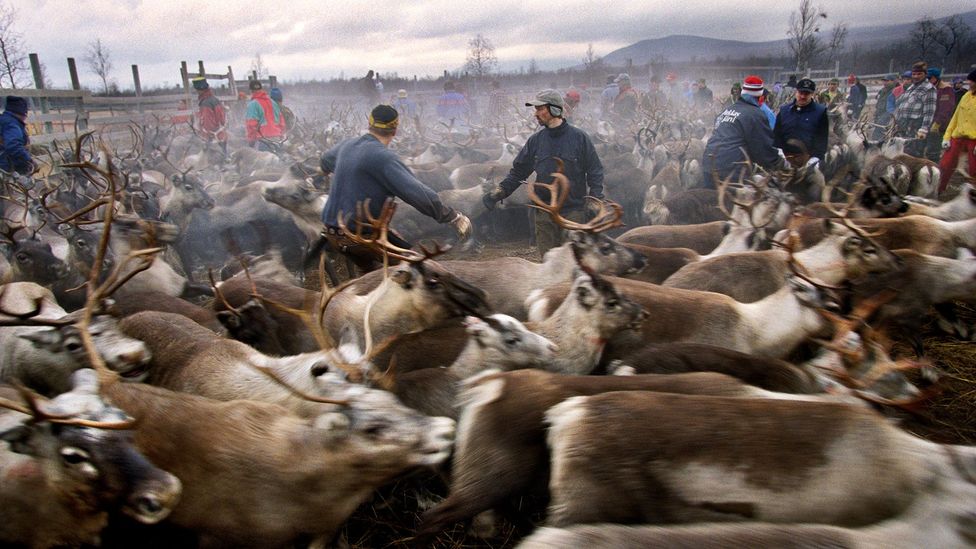
Some fear that traditional knowledge to do with reindeer herding, fishing and the Arctic landscape will vanish along with certain words (Credit: Getty Images)
THE SOUND OF SAMI
There are ten Sami languages – South, Ume, Pite, Lule, North, Inari, Skolt, Akkala, Kildin and Ter. Unesco regards all of them as endangered and at least one has gone extinct. North Sami is the most widely spoken Sami language, with between 20,000 and 30,000 speakers in Norway, Sweden and Finland. The second biggest Sami language is Lule Sami, spoken in Norway and Sweden, by about 2,000 people. For the others, the speaker numbers range from close to zero or only a few dozen, to several hundred – though for some, the numbers are rising thanks to successful revitalisation efforts.
Mountain confusion
The changes in the ecosystem present another problem: as the landscape changes, Pieski and others say, places don’t match their traditional Sami names anymore.
In Sami languages, most place names are derived from nature, with many reflecting the shape of the terrain or the predominant vegetation. This gives Sami speakers a crucial advantage in navigating the landscape, drawing on the knowledge of many generations before them, who passed on important information about places through their names.
Climate change is changing the landscape in many ways. It is accelerating the shrubification of the Arctic, as the warmer, longer growing seasons speed up plant growth. Forests and shrubs are moving to more north and higher in the mountain region.
“In North Sami, duottar refers to a mountain that has no high vegetation. Várri is a small mountain with high vegetation. Many of the duottars in Sápmi are actually becoming várri. So the place name does not correlate with the description anymore,” says Näkkäläjärvi.
As with the mismatched place names, there are fears that other traditional knowledge such as practices and skills to do with reindeer herding and fishing will also vanish along with certain words. “I’m worried about losing the traditional Sami knowledge of salmon fishing,” says Pieski. “We’ve lost a lot of the language already.”
Reindeer herders have told Näkkäläjärvi that the knowledge to identify animal footprints in the snow is already fading in some areas. “They could be of reindeer that has run away from the herd (ruvggáldat), frightened reindeer (hiras), or reindeer that tends to wander alone (duoddil, jáđas, liŋka, hilbesboazu, meahcehas or loavsku),” he says. In fact, even for something as specific as “frightened reindeer”, there is a range of words: cohcas, várgu, árgi, biltu, čuosku, dirboges, eaidanas, menodahkes. “These all refer to frightened reindeer. Some are only used for a reindeer of certain sex or age,” Näkkäläjärvi says.
He adds that those words are typically learned while herding reindeer, and their survival is tied to that way of life: “If the need for using a certain terms disappears, or people stop using them because they can’t identify such tracks, words can disappear with people not even noticing that they’re gone.”

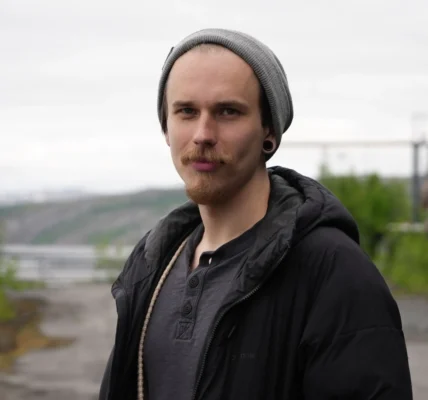
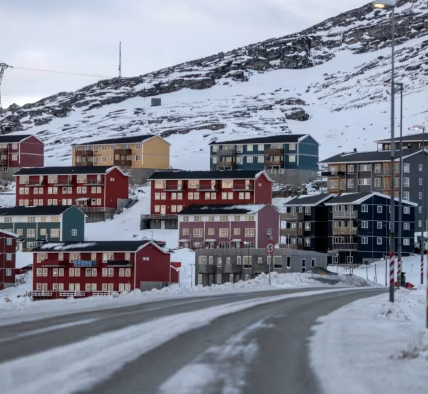


I loved as much as youll receive carried out right here The sketch is attractive your authored material stylish nonetheless you command get bought an nervousness over that you wish be delivering the following unwell unquestionably come more formerly again as exactly the same nearly a lot often inside case you shield this hike
Wow Thanks for this review i find it hard to track down good info out there when it comes to this topic thank for the site website
Wow Thanks for this piece of writing i find it hard to unearth great ideas out there when it comes to this blog posts appreciate for the write-up site
Wow Thanks for this thread i find it hard to uncover exceptional details out there when it comes to this subject matter appreciate for the review website
Wow Thanks for this article i find it hard to locate very good advice out there when it comes to this material appreciate for the publish site
Wow Thanks for this site i find it hard to acquire great guidance out there when it comes to this material appreciate for the article website
Wow Thanks for this review i find it hard to see great data out there when it comes to this subject matter appreciate for the article website
Wow Thanks for this posting i find it hard to get very good ideas out there when it comes to this topic appreciate for the thread site
Wow Thanks for this piece of writing i find it hard to realize good details out there when it comes to this material thank for the review website
Wow ) Thanks for this piece of writing. I find it hard to realize. Very good information and facts out there!
Wow! Thanks for this information )
Wow, it’s fascinating to see how climate change is impacting the Sami language! 🌍 It really highlights the deep connection between culture and environment. Thanks for sharing this important perspective!
This is such an eye-opening topic! It’s amazing how language evolves with our surroundings, and the Sami language is a beautiful example of that. Let’s keep raising awareness about these changes! 💚
I love learning about how different cultures adapt to changes in their environment! The way climate change is influencing the Sami language is truly remarkable. Keep spreading the knowledge! 😊
This is so important! The Sami language carries so much history and culture, and it’s incredible to see how it adapts over time due to climate change. Thank you for shedding light on this!